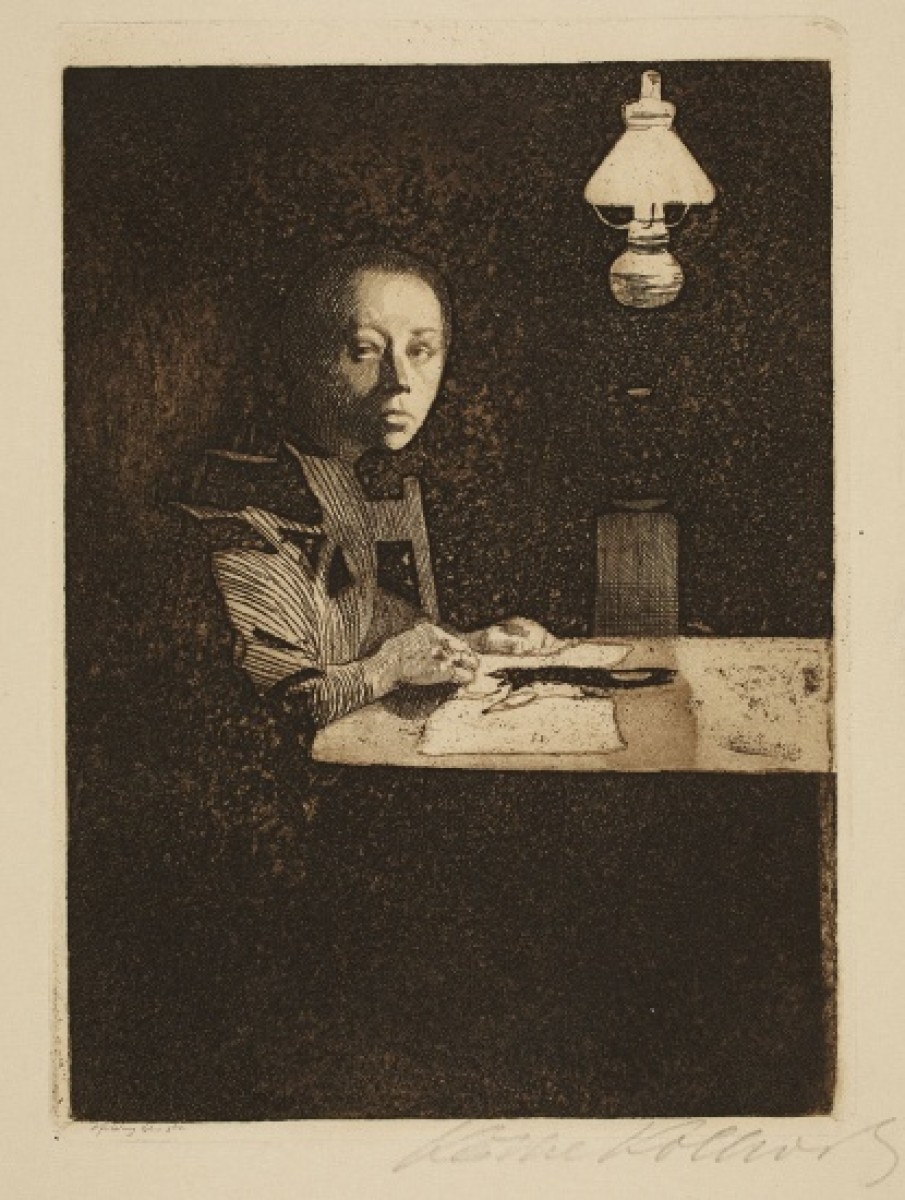Becoming Käthe Kollwitz
Follow the struggles and successes of Käthe Kollwitz as a young, aspiring artist through the current (and final) installation of her works at the AGO.

Despite becoming an artist in the late 1800s when opportunities for women were limited, German artist Käthe Kollwitz’s achievements are incredible. Today, she’s recognized as a strong voice at the intersection of art and activism. You can follow Kollwitz’s journey as an ambitious artist in the third and final rotation of her prints, drawings and sculptures, on view now in the AGO exhibition Becoming Käthe Kollwitz.
Kollwitz’s talent as an artist became apparent in her childhood. She viewed drawing as an essential part of the creative process and created some of her most personal works of art in graphite, charcoal and pen and ink. Over her five-decade-long career, her work brought her great success, although there were many obstacles in her path.
As a woman artist in Berlin in the late 1800s, Kollwitz frequently experienced gender discrimination. When she decided to study art, women were denied admittance to the “men’s only” Berlin Academy of Art – but that didn’t stop her. She eventually became the first woman to be accepted as a teacher at the same school. Some of the rare prints and drawings seen in this exhibition were created during her time as a student.
Throughout her life, Kollwitz’s work reflected the experiences of oppressed women and the working class. She drew from historical narratives, modern fiction, her own experiences, and the lives of the women around her. She spoke out about women’s rights and pushed for better living conditions for Berlin’s impoverished people. “I accept that my art has a purpose. I want to have an impact in these times when people are so desperate and in need of help,” she wrote.
A highlight of the exhibition is A Weaver’s Revolt, Kollwitz’s first major print series. The six-print series combines the social commentary and bold stylistic approach to printmaking Kollwitz is known for. A Weaver’s Revolt illustrates the worker uprisings against corrupt landlords in Silesia Prussia in 1844 and focuses on the experiences of the women involved. The works were well received when they were shown at the Great Exhibition of Berlin Art in 1898. Jurors nominated Kollwitz for a gold medal, but Kaiser Wilhelm II forbade the award because she was a woman. This controversy brought Kollwitz early fame and notoriety.
The AGO is home to one of the largest collections of Kollwitz’s work outside of Germany, thanks to a generous gift of over 170 works in 2015 by Dr. Brian McCrindle.
Becoming Käthe Kollwitz is the third and final rotation of works. See them on Level 1 in the Linda & Bob Krembil Pathway (Gallery 124), the Walter Trier Gallery (Gallery 139), the Nicholas Fodor Gallery (Gallery 140), and Gallery 141. This exhibition is included with General Admission.
Are you an AGOinsider yet? If not, sign up to have stories like these delivered straight to your inbox every week.

